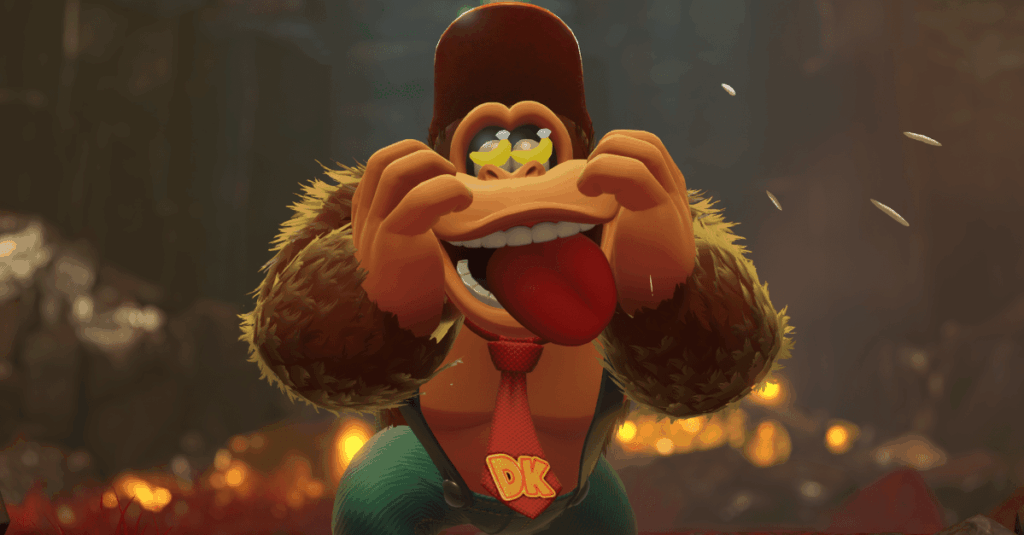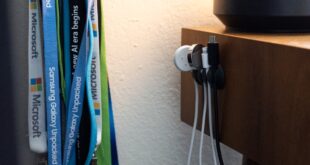
The creation of Donkey Kong Bananza started with destruction.
“What we were really going for was this gameplay experience that comes from destruction,” Bananza director Kazuya Takahashi says in an interview with The Verge. From that simple premise, Bananza’s creators have built an entire game about breaking stuff.
Bananza is the second major Switch 2 exclusive from Nintendo, and it’s made by the same developers that worked on Super Mario Odyssey, one of the games that came out during the launch window of the original Switch. According to the developers on Bananza, Donkey Kong’s appetite for destruction didn’t start with his beloved bananas, as one might expect, but with cheese.
“We had used voxel technology in Super Mario Odyssey,” says Bananza producer Kenta Motokura. “For example, in the luncheon kingdom, you can dig through large piles of cheese, and in the snow kingdom, can plow your way through snow.”
Voxels, simply put, are the chunks that make up a digital world. The same way a pixel represents the smallest unit of a flat digital image, a voxel is like the smallest unit of a 3D object, and a technology Nintendo was working with way back in the days of the original Switch. In fact, much like Mario Kart World before it, Bananza was originally planned to be an OG Switch title.
“We had in mind all of these possibilities using voxel technology,” says Motokura. “But we realized when we learned about Switch 2 that there were even greater possibilities to explore.”
Those greater possibilities were twofold: variety in the kinds of materials DK could smash and the ability to make that destruction persist. “With the Switch 2, we found that we could create lots of different kinds of destructible objects,” says Takahashi. “This created a very diverse experience of destruction within the game.”
In Bananza, there’s very little DK can’t break, smashing through layers of rocks, mud, snow, thorns, and molten chocolate masquerading as lava. They fracture in different ways and make different sounds when hit. And rather than having a destroyed chunk of material reappear after some time, as some games with destructible environments do, the damage you do sticks.

“What’s really important to that experience is that this destruction is continuous,” Takahashi continues. “That you can destroy something and find something interesting behind it, and then destroy something behind that, and keep on going with new discoveries.”
For the developers, another part of the Bananza puzzle was figuring out who Donkey Kong is now. He hasn’t been the kind of character to go explorin’ since his days of digging up bananas in Donkey Kong 64, 26 years ago. He’s also rarely alone, accompanied by any number of Kong sidekicks or attached to whatever Mario and friends are doing at the time. He’s not alone in Bananza either, this time palling around with a young Pauline.
It makes sense that Pauline would accompany him, since in the deep Donkey Kong lore, Pauline was the woman he (or a younger version of Cranky Kong) kidnapped in the original Donkey Kong arcade game. But DK already has a gallery of sidekicks, and Motokura says that the subject of partners came up early in the development process, with Pauline being one of the potentials.
“Very early on this idea came up that Pauline would be a good choice in this case, but it wasn’t implemented right away,” he says. Pauline’s addition would only come later as the development team worked out the kinds of powers DK would use.

There are animals Donkey Kong can transform into, with each animal giving him a unique power. His base form, which is simply DK himself, allows him to smash through harder materials, like concrete. The zebra form allows him to run over water and other crumbly materials. There are several animal powers DK can use, and the developers asked the music department to create special songs for each transformation. Pauline is a performer. We got a bit of that during the New Donk City performance in Super Mario Odyssey. Once it was established that music would initiate Donkey Kong’s transformations, Pauline became a natural fit as a sidekick.
“From that idea,” Motokura says, “suddenly it was like, ‘Okay, well, then Pauline should be the one to sing.’” Pauline’s music is just as integral to the game as DK’s destruction. Her singing creates musical notes DK can follow to the next objective and it helps her communicate with the creatures they encounter. It even lets her get in on the destructive fun.
“We also have in co-op play the opportunity for a second player to control Pauline’s voice blasts that affect enemies and the environment,” Motokura says. “So a lot of unique gameplay ideas really just fell into place in Donkey Kong Bananza once we had placed Pauline as the accompanying character.”
In Bananza, your job is to move fast and break things. It’s baked into nearly every aspect of the game, right down to its UI, where selecting an option breaks the corresponding button into little pieces. And though the idea of “just break stuff” seems like it’d be a little one-note to hang a game on, the developers have created a game in which you gotta break it to make it.
 Latest World Breaking News Online News Portal
Latest World Breaking News Online News Portal






